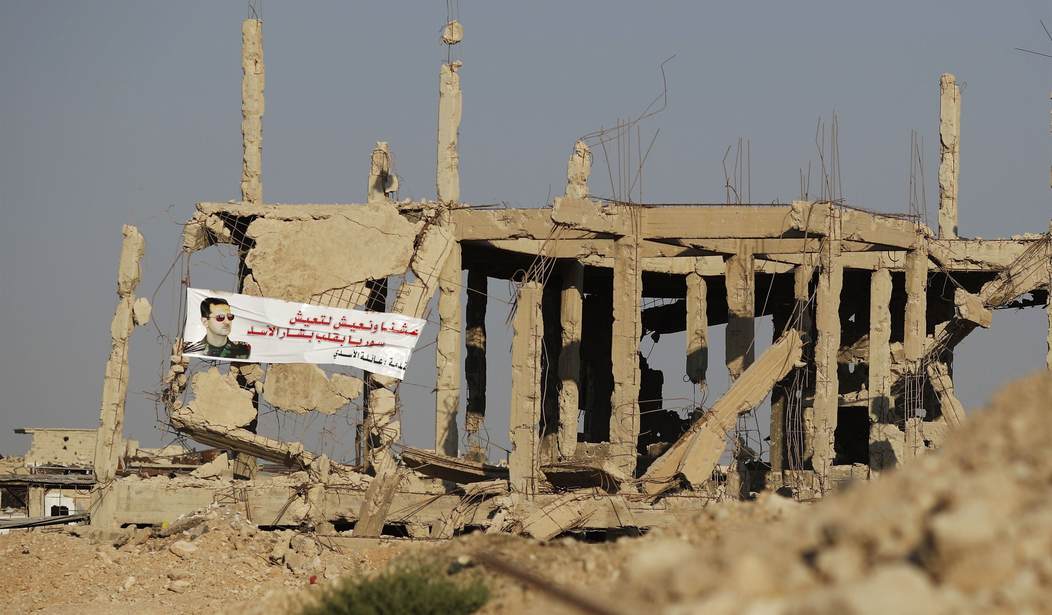The big build-up of Gaza as an impregnable Hamas tunnel fortress has turned, in a comparatively short time, into the saga of a martyr city, soon to be a displaced person's camp, the West's wards. Leaving politics and ethics aside, the military collapse suggests Hamas soldiers have been poorly served by their leadership. Gaza was designed as a terror base, not for the conventional war Hamas got itself and the whole strip into. It was never configured and could not conceivably have resisted the IDF. Their survival plan depended on Israel reacting as they anticipated, and not as it could. Hamas' high command was so sure they could predict Israel's intentions that they just plumb ignored its capabilities.
Recent reports suggest the IDF now has what's left of Hamas' northern Gaza battalions, which are now between a hammer and anvil, the hammer descending from the Mediterranean coast against the anvil of the open spaces on the Israeli border. When the IDF hammer reaches Salah Deen Road, probably on multiple axes, Northern Gaza will have essentially fallen. The Economist already proclaims, "The battle of northern Gaza is almost over." The buzzards, like Abbas, are already circling overhead in anticipation. "The Palestinian Authority is ready to assume responsibilities in the Gaza Strip as part of a comprehensive political solution for the West Bank, East Jerusalem and Gaza, Palestinian President Mahmoud Abbas said," according to the Jerusalem Post. The downfall is so calamitous that some analysts now believe Hamas never calculated strategy beyond its Oct 7 raid. For instance, Edward Luttwak writes: "Muslims even Columbia U profs exploded in sheer joy -finally a victory. But no Day 2 plan."
But they did have an old plan. Way back in 2012, Gur Laish, a former head of the IAF Warfare Planning Department, believed Hamas had a grand strategy, which he called "a stable situation of ongoing limited confrontation" that deliberately avoided provoking what he termed the Amorite Iniquity Effect. This is a reference to Genesis 15, which mentions that a now-vanished people called the Amorites would escape retribution until its iniquities had exceeded a critical level. Once the Iniquity level got too bad, it would provoke a reaction that would destroy them. The metaphor, as applied to Hamas, suggested that it would be in their self-interest to remain a murderous nuisance, but the survival instinct would dissuade it from going too far, lest they share the fate of the Amorites. Lais described the tension between the means available and the proclaimed ends as both sides contenting themselves with chronic failure.
Hamas has set itself the principal objective of terminating the existence of the State of Israel ... The strategy chosen by Hamas in order to attain its pretentious principal objective is that of “resistance” (“MUKAWAMA”). ...The inherent problem in the strategy of “resistance” may thus be discerned: it can succeed so long as it is not too successful, and if it is too successful, it fails. ...
to a western observer a strategy of “resistance” appears to be pointless, and it may be expected that it will be abandoned, it well matches the approach of Hamas that attaches value to its very resistance. The fact that a situation is likely in which both parties are satisfied with their own strategies is what permits the existence of a (limited) ongoing confrontation, the price for which is being paid by both parties, who are not getting any closer to a situation of peace or resolution. From Israel’s perspective, Hamas’ strategy compels it to absorb what it regards as a tolerable level of terrorism (although Israel would prefer total quiet on its borders) but one that permits it to make progress towards its national ends of social and economic development.
This prescient article captures both the reason for the IDF's October 7 failure and Hamas' subsequent downfall. The Israelis never expected Hamas to do something as irrational as provoke the full force of Jerusalem's retaliation. Hamas, for its part, never rationally prepared for the retribution they should have known would follow. The mistake of Hamas' enemies and its disappointed allies was to assume the decision-makers would be sane. Dan Hannan, writing in the Washington Examiner, is considering the possibility that the antagonists in the Arab-Israeli conflict might actually be irrational.
A thought has been worming its way uncomfortably through my mind since Oct. 7. What if peace is impossible? What if there is literally no way to reach a lasting accord? What if one side will settle for nothing less than the destruction of the other? My doubts began in the immediate aftermath of the atrocity as I watched the reaction of some Palestinians and some of their sympathizers, not least in the West. On that dreadful Saturday evening, there had as yet been no Israeli response. Protesters did not have the (perfectly reasonable) argument that the participants in later demonstrations had, namely that they were defending human rights in Gaza. No, this was exultation in the murder of Israelis, pure and simple.
A world accustomed to Hollywood's happy endings can't easily accept the fact that nothing in history prohibits tragedy. Nothing says political actors have to act rationally, but neither does anything guarantee that crazy lasts forever. The Amorites, for instance, are gone. Set against this is the strange fact that truth and beauty somehow never die out, and by some process, tragedy never has the last word. Hope lives, though it may take a long time to come true.










Join the conversation as a VIP Member